"Courage is the price that life extracts for granting peace. The soul that knows it not, knows no release from little things. Knows not the livid loneliness of fear, Nor mountain heights, where bitter joy can hear the sound of wings." - Amelia Earhart Some Great Things Come in Small Packages
One of the best-kept secrets of the war in South East Asia was just how much fun the A-37 light attack aircraft was to fly. This great little fighter entered service in 1967 with little or no fan-fare. Itís low cost, ease of maintenance, and combat effectiveness ensured quick acceptance to fill the role as a replacement for the A-1s in South Vietnam (SVN). The origin of integrating the A-37 into the aircraft inventories of both the USAF and Vietnamese Air Force began with the 604th ACS, a newly formed squadron of 25 A-37A's at England AFB in early 1967. The squadron was tasked with a full evaluation of the airplane under the project name "Combat Dragon." The 604th began the initial checkout phase of the evaluation in March 1967 and the squadron was ready to ship out to SVN in July of the same year.
I was one of four guys assigned to the initial cadre that formed the nucleus of the 4532nd CCTS that would initiate the stateside training programs. After arriving at England in May 1967, this small group of intrepid aviators would attend to all of the mundane duties that go with starting up a new squadron. When they could fit us in, the Combat Dragons provided two of us with a quickie check out that consisted of eight rides in the A-37A. We got two day transition rides, one instrument ride, one four ship formation ride, two conventional range missions, one day tactical range mission and one night tactical range mission. This certified us to be A-37 IPs and meant that we would have to train the remaining pilots in the squadron. When the 604th departed they wished us good luck and six aircraft showed up for us to start the training program. The build-up of squadron personnel took off at this point and it wasn't long before we were fully manned.
Starting up a new program was a challenge, as we had to share all of the ranges and training areas with the other Air Commando training units at Alex. Being the new guys on the block we normally got what was left over. In addition we had weekly fights with the Combat Support Group guys that made out the weekly and all of the long-range schedules for training areas and ranges. They were what remained of the Air Division that had been at England. With the departure of the two F-100 wings to Vietnam, all these guys did was sit around assuming that the fighter wings would soon return and they needed to be ready for them. Hence the foot dragging about letting us plan for the future training loads we were told to expect.
Amazing Airplane That A-37B "To most people, the sky is the limit. To those who love aviation, the sky is home." - UnknownFollowing the combat evaluation in South Vietnam, we were informed that the A-37A was judged an effective weapons system and that full scale production of the A-37B would proceed based in part on the recommendations of the "Combat Dragon" evaluation team.
Several flight publications reported at the time that the A-37 had so much thrust relative to its size, that pilots had to reduce power immediately after takeoff to keep from exceeding the gear limit speed. The A-37B at low fuel weights did have a 1:1 thrust to weight ratio and was able to takeoff and immediately execute a half loop with an immelman at the top and continue into a repeat maneuver. I believe that the F-16 demonstration aircraft currently perform this maneuver at many of their airshows. It should be pointed out that the A-37 perfected this maneuver over 35 years ago.
My Most Memorable A-37 Experience "Try to relax and enjoy the crisis." - Ashleigh Brilliant My most memorable experience in the A-37 occurred while flying a "VFR On Top" training flight on a weather day at Alex. The flight was a student transition flight and we were able to get on top somewhere in the neighborhood of 20 to 22,000 feet. We had accomplished the air work and acrobatics and were starting to do slow flight before returning to the base for landing. I had the student configure the airplane for slow flight and all went well. I instructed him to bring the power to idle and perform a landing attitude stall. The student did as he was instructed and allowed the airplane to stall. He pushed the throttles forward to accelerate and nothing happened. RPM on both engines dropped below 30% and no amount of throttle movement would allow the engines to accelerate.
Panic time as we were now descending into the clouds. Being in the weather delayed my decision to stopcock the engines as I didnít want to lose AC electrical power. Instinctively, I went to Guard channel and informed approach control that we had a double engine flameout and needed priority handling for an approach and landing at England. I asked the student to clean up the airplane and review the bailout procedures just in case. Approach Control cleared out the area for us to proceed towards the base. Once the glide had been established, I moved the throttle of the Number 2 engine to the cut-off position and proceeded to run through the airstart procedure. No start indications - pucker time. I pushed the nose over into a steeper dive and got the airspeed above 180 Kts. to get the engine rpm to respond and tried it again. That was the hardest thing I ever had to do was give up that altitude to try another airstart. This time the engine started as we were passing through 5,000 feet. We both let out a sigh of relief and proceeded to England for recovery. Not knowing why we had the difficulty, I let the Number 1 engine remain in a rollback condition to ensure electrical power and planned to shut it down on landing. The cloud ceiling was at 800 feet and it sure felt good when we broke out and sighted the runway
After landing, I debriefed maintenance as to what had happened. After a complete inspection couldnít turn up a cause, the incident was reported back to Cessna who said that what I encountered was impossible. Well, they sent a test pilot to England and we flew the same profile that I had flown when I encountered the rollback. To his surprise we were able to duplicate the exact same condition that I had experienced before. After analyzing the problem, it was determined that engines operating at low RPM at altitude would get cold soaked which would allow the engine RPM to decay and rollback to below 30%. After some experimentation during one of the flights, it was determined that if you pushed the nose over and allowed the airspeed to approach 200 Kts. the engines would recover by themselves. Cessna put a warning in the Dash-1 that this condition could occur under just the conditions I described. Trading Up "Don't spend your entire life trying to fit in with the rest. It is only those who are different who get remembered. Ah hell! We had more fun in a week than most people have in a lifetime." - Anonymous I was asked to return TDY to Laos in March of 1969 to again provide assistance to the Laotian T-28D Squadron at Luang Prabang. The only difference is that this time I would also perform some RAVEN FAC duties in MR-I. After two back-to-back 179 day TDYs, I returned to Alex and found out that I had been assigned to the 4408th CCTS during my absence, but before I could sign in, personnel informed me of my reassignment to the 603rd SOS at Hurlburt. I would be the squadron Stan Eval guy. The squadron had traded in their A-26s for A-37s and needed some IPs with A-37 experience.
After they began flying the A-37B, it didnít take much to convince them that they were getting a good deal. During their IFR checkout, I always felt that I was certainly getting my share of night over-water refueling missions. The tanker track we were using went out into a black hole somewhere over the Gulf of Mexico and if there was any associated weather it was vertigo city, but I guess that is the luck of the draw. It was fun convincing the pilot that you were checking out we were really flying right side up and no, the tanker wasnít doing barrel rolls. It definitely kept a guy on his toes. The 603rd was also part of the SAR evaluation team to find a replacement for the A-1 in the "Sandy" role. We had to demonstrate that the A-37 could stay in close with the helicopters and provide the cover and firepower needed to suppress enemy resistance. It was also necessary to demonstrate that the A-37 could refuel from the KC(MC)-130 tankers. The A-37 participants always felt that we met the stringent requirements with flying colors but the nod went to the A-7s.
There were definitely some bizarre happenings at Hurlburt during this period including the night that an A-1E went out of control on takeoff and crashed into our parking ramp destroying several A-37s. In addition, the crash resulted in 2.75 in. rockets being fired all over the ramp and into the maintenance trailers. Amazingly there were no injuries to any of our squadron personnel. The A-1 student pilot managed to use the "zero-zero" capability of the Yankee extraction system to escape from the airplane uninjured. The ambulance taking the pilot to the Eglin AFB Hospital, for his post accident check-up, was in an auto accident that caused some serious injuries to the young pilot.
Another incident was the mid air collision between two of our A-37s on a local training flight. Seems as though one of our new overly aggressive young pilots tried to make like John Wayne and do a roll around the flight leader. He misjudged the maneuver and collided with the flight leads left tip tank. Both aircraft were damaged and had to make emergency landings at Duke Field. There were no serious injuries to either pilot, only their pride was hurt. I think the two pilotís initials were George D. and Steve M. but it has been so long that I may be wrong.
Our Squadron Commander saw his whole career passing before his eyes as this incident had a lot of very high level interest. Through a lot of trial and error and some very innovative photos, we were able to demonstrate and convince the TAC Commander, General Momyer, that under certain conditions the small profile of the A-37 would allow it to disappear completely behind the tip tank of the flight lead. With the flight leader unable to see the other aircraft, a very dangerous situation was created. For, if lead were to suddenly drop a wing to visually check for his wingman it could result in the aircraft banging tip tanks. It took some doing but General Momyer bought in on the theory and we were able to salvage the careers of two outstanding young officers and a future Air Force Major General. Postscript "If obstacles are getting in your way, you're not seeing the goal clearly enough. The quality of a person's life is in direct proportion to their commitment to excellence, regardless of their chosen field of endeavor." Ė Vince Lombardi
As my assignment to SOF HQ was coming to an end, I was alerted in the summer of 1973 for a return to SEA for a third tour. This time I was to be the Exec to the USSAG / 7th AF DCS Ops, MG Jack Bellamy. However, after my arrival at NKP, I was never allowed to get comfortable in the job as I was selected by HQ USAF to be part of a plan to upgrade the TACAIR capability of the Cambodian AF. I spent six months in Phnom Penh executing this plan. I am happy to report that it was successful in spite of the limited nature of U.S. Involvement at that time.
In 1974, when I returned from my tour in Cambodia I was assigned to the 23rd TFW as the Chief of Operations Plans. I was very pleased to see that some of the A-37s were still there providing fighter lead-in training for the A-7s and the guys were still training ANG and AFRes pilots. The A-37s are now long gone but not forgotten. I retired from the AF in May 1976, and while I logged over 750 hours in this great little fighter, regrettably I never made it to Vietnam to fly the A-37 at Bien Hoa. |

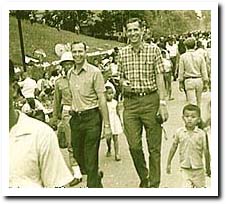
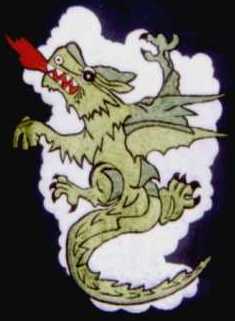
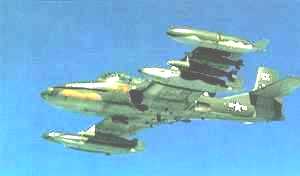
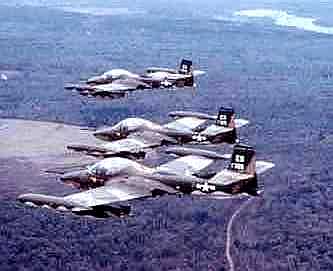
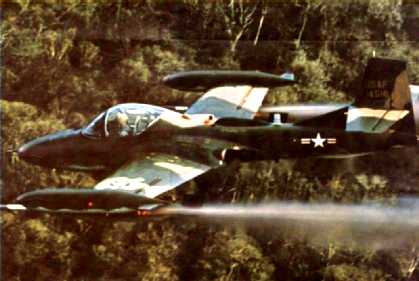 As the squadron scheduling officer, it was a real challenge to plan a full-blown training schedule with six airplanes especially when our students started to arrive 30 at a time. This was particularly true in the era of 66-1 maintenance. The maintenance guys tried to limit the daily sorties and hours on the birds to fit a typical maintenance schedule. To provide the sorties necessary to graduate classes on time, it required us to fly each of those six A-37s at least five times a day. Now you can see why the maintenance planners were raising such a fuss. It would remain this way until the A-37Bs started to arrive. Anyway we were able to do it and the students were cranked out to meet the demanding needs of the SEA pipeline. Eventually, we were able to build a schedule with as many as 10 A-37s on the schedule. Even a good schedule is no good if you do not have a training program. Felix "Sam" Sambogna became our training officer and began developing our syllabi and producing all of the training manuals. It was all hit or miss but the publications were a work of art.
As the squadron scheduling officer, it was a real challenge to plan a full-blown training schedule with six airplanes especially when our students started to arrive 30 at a time. This was particularly true in the era of 66-1 maintenance. The maintenance guys tried to limit the daily sorties and hours on the birds to fit a typical maintenance schedule. To provide the sorties necessary to graduate classes on time, it required us to fly each of those six A-37s at least five times a day. Now you can see why the maintenance planners were raising such a fuss. It would remain this way until the A-37Bs started to arrive. Anyway we were able to do it and the students were cranked out to meet the demanding needs of the SEA pipeline. Eventually, we were able to build a schedule with as many as 10 A-37s on the schedule. Even a good schedule is no good if you do not have a training program. Felix "Sam" Sambogna became our training officer and began developing our syllabi and producing all of the training manuals. It was all hit or miss but the publications were a work of art.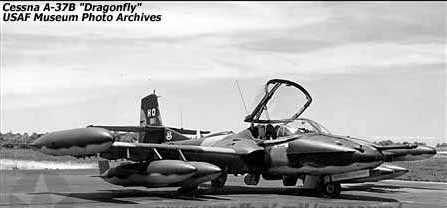 We were pleasantly surprised with the airplane, while the A-37B on first glance looked like the "A" model; it was a completely different bird. One of the biggest improvements was the newer J85-17A engine capable of producing 2,850 lbs. of thrust that replaced the "A" modelís 2,400 lb. thrust engines. Also, the inclusion of an inflight refueling (IFR) capability was another performance enhancement the airplane received. Bill Eaves, who assumed the role as our weapons guy, made some important recommendations late in the development phase that endorsed the better gun system that had a selectable firing rate of 3,000 or 6,000 rounds per minute. Being an old "Hun" driver he also made some recommendations on improving the weapons control panel, the optical gun site, the nose mounted gun camera, and a strike camera to be mounted in the lower center fuselage section. The new airplane also had much better flight characteristics that were the result of a redesigned flight control system that now had redundant control cables to the rudder and elevators and much needed aileron boost tabs.
We were pleasantly surprised with the airplane, while the A-37B on first glance looked like the "A" model; it was a completely different bird. One of the biggest improvements was the newer J85-17A engine capable of producing 2,850 lbs. of thrust that replaced the "A" modelís 2,400 lb. thrust engines. Also, the inclusion of an inflight refueling (IFR) capability was another performance enhancement the airplane received. Bill Eaves, who assumed the role as our weapons guy, made some important recommendations late in the development phase that endorsed the better gun system that had a selectable firing rate of 3,000 or 6,000 rounds per minute. Being an old "Hun" driver he also made some recommendations on improving the weapons control panel, the optical gun site, the nose mounted gun camera, and a strike camera to be mounted in the lower center fuselage section. The new airplane also had much better flight characteristics that were the result of a redesigned flight control system that now had redundant control cables to the rudder and elevators and much needed aileron boost tabs. 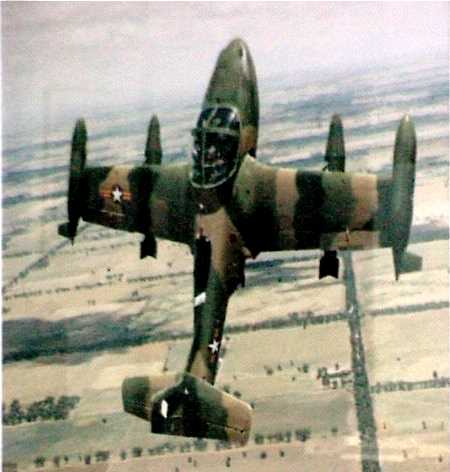
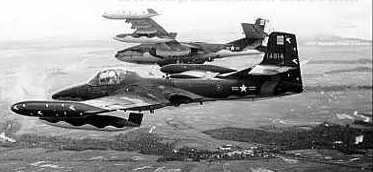

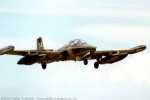
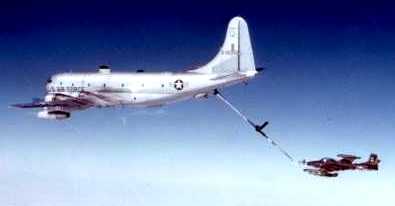 The 603rd was a dream assignment. All we did was participate in firepower demos and fly gunnery missions every day practicing for that TAC EVAL that never came. Some of the interesting projects that I participated in were developing air-refueling techniques for the A-37B. Ferrying A-37s to Panama and to the various ANG and Reserve units receiving the airplanes. I also spent a lot of time TDY to MacDill AFB to train an IP cadre from the ANG units checking out in the A-37 on in-flight refueling (IFR). This included New York's 138th TFS at Hancock Field, the "Boys from Syracuse." Who at first were despondent about giving up their F-86Hs, which they considered to be the last of the really fun airplanes to fly.
The 603rd was a dream assignment. All we did was participate in firepower demos and fly gunnery missions every day practicing for that TAC EVAL that never came. Some of the interesting projects that I participated in were developing air-refueling techniques for the A-37B. Ferrying A-37s to Panama and to the various ANG and Reserve units receiving the airplanes. I also spent a lot of time TDY to MacDill AFB to train an IP cadre from the ANG units checking out in the A-37 on in-flight refueling (IFR). This included New York's 138th TFS at Hancock Field, the "Boys from Syracuse." Who at first were despondent about giving up their F-86Hs, which they considered to be the last of the really fun airplanes to fly.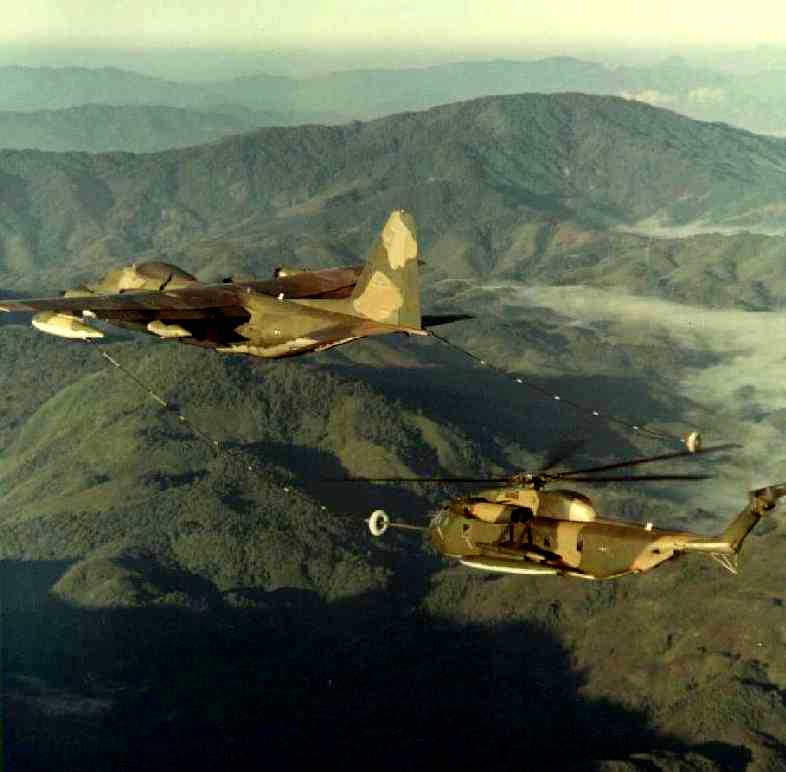 I think that the evaluation may have been weighted towards the A-7s. General Momyer didn't care much for Special Ops and the A-37 was an aircraft that would not be part of the TAC inventory. Anyway, the simulated SAR missions were a lot of fun to fly. During the summer of 1970, when the planning and preparations for the Son Tay Prison Camp raid were in full swing, serious consideration was given to using the A-37Bs because of the ability to air refuel and their redundant crew position. The A-37 would have been a good choice to provide the air cover for the rescue attempt, but again using the A-37 was overruled and the A-1Es were selected.
I think that the evaluation may have been weighted towards the A-7s. General Momyer didn't care much for Special Ops and the A-37 was an aircraft that would not be part of the TAC inventory. Anyway, the simulated SAR missions were a lot of fun to fly. During the summer of 1970, when the planning and preparations for the Son Tay Prison Camp raid were in full swing, serious consideration was given to using the A-37Bs because of the ability to air refuel and their redundant crew position. The A-37 would have been a good choice to provide the air cover for the rescue attempt, but again using the A-37 was overruled and the A-1Es were selected. 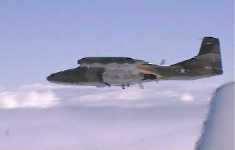
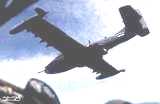
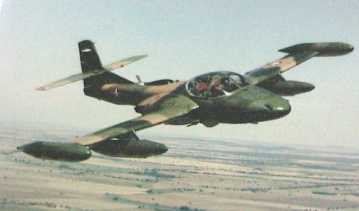 When the 603rd SOS was prematurely closed down, most of the young pilots were transferred to England AFB to continue flying the A-37 while some of us older guys took staff jobs at SOF or in the 1st SOW. I became a Plans Officer at SOF and later was asked to set up an instructor training program for IPs assigned to the many varied Special Operations training squadrons. This became a very successful program that remains in existence to this day at the Special Operations School.
When the 603rd SOS was prematurely closed down, most of the young pilots were transferred to England AFB to continue flying the A-37 while some of us older guys took staff jobs at SOF or in the 1st SOW. I became a Plans Officer at SOF and later was asked to set up an instructor training program for IPs assigned to the many varied Special Operations training squadrons. This became a very successful program that remains in existence to this day at the Special Operations School.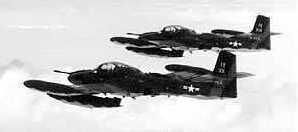 The stateside A-37 squadrons had become home to a lot of Air Commandos, newly trained young pilots and fighter pilot friends that I had trained or served with in the past. As could be expected, I had been reunited with Bob Downs, Jack Drummond, Jim Walls, Joe Potter, Felix Sambogna, Bill Eaves and Dick Secord when I came to the 603rd at Hurlburt. There was also the greatest assemblage of young fighter pilots that I have ever had the privilege of serving with. This was the group that the stars fell on as many went on to make General officer. The A-26 guys that transitioned into the airplane were great and the 603rd would not have been the same without Dave Henry and Lee Griffin being there.
The stateside A-37 squadrons had become home to a lot of Air Commandos, newly trained young pilots and fighter pilot friends that I had trained or served with in the past. As could be expected, I had been reunited with Bob Downs, Jack Drummond, Jim Walls, Joe Potter, Felix Sambogna, Bill Eaves and Dick Secord when I came to the 603rd at Hurlburt. There was also the greatest assemblage of young fighter pilots that I have ever had the privilege of serving with. This was the group that the stars fell on as many went on to make General officer. The A-26 guys that transitioned into the airplane were great and the 603rd would not have been the same without Dave Henry and Lee Griffin being there.
